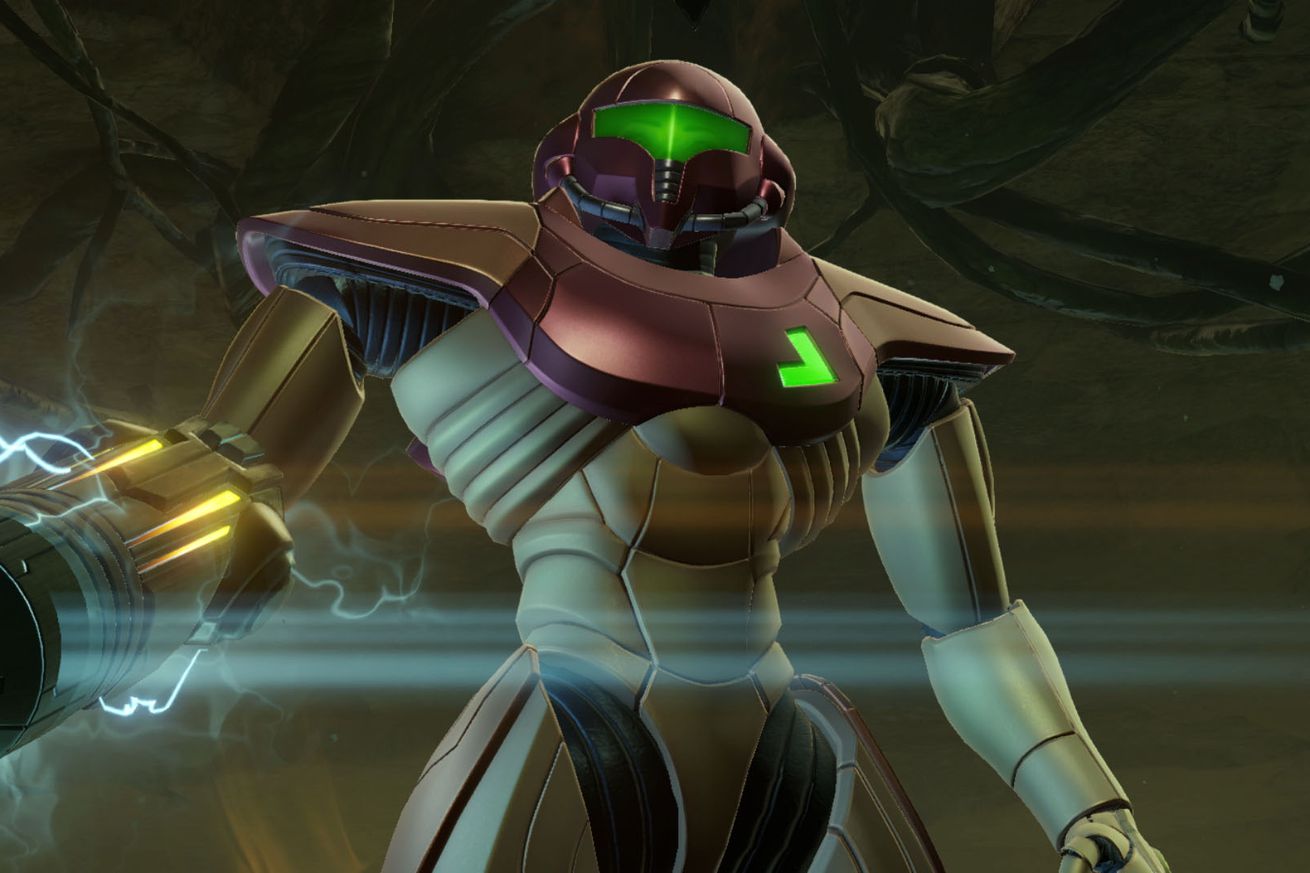
Metroid Prime’s remaster is the best way to experience a classic
Metroid Prime is my favorite game of all time. It was the Super Mario 64 of Metroid, brilliantly ushering the sci-fi platformer series from 2D to 3D. Obviously, I was thrilled to hear about Nintendo’s surprise release of Metroid Prime Remastered, which you can play right now. But I’ll admit that I was a touch nervous to return to the game, which I hadn’t played in years. Would it hold up? In my first hour with Remastered, the answer so far is definitely yes.
I was overcome by waves of nostalgia from the moment I booted up the game. The glitchy, electronic, and somewhat spooky theme song is just as effective at setting the tone of the game as it was when I first played Metroid Prime in 2002 on the GameCube. So is the legendary main menu music, which is the next thing you hear, and the fanfare that plays just moments before you finally take control of Samus, which is a brilliant take on the fanfare from the very first Metroid on NES.
Remastered’s first level, a mysterious space station, remains a master class of an introduction. The first thing it teaches you is how to use Metroid Prime’s distinct lock-on system, which you’ll rely on throughout the game to defeat enemies and solve puzzles. Back in 2002, this was a critical moment to demonstrate how a 2D series would play in 3D, and while most gamers are probably more familiar with first-person shooters nowadays, Metroid Prime’s lock-on system is still different enough that I appreciated the refresher.
And in Remastered, these first moments can teach you something new, too: the game’s excellent new dual-stick control scheme. Don’t worry, you’ll still be doing a lot of locking on in Remastered, but it’s now much easier to actually move around while doing so. The original GameCube release had you turn and move with just one control stick, and while I remember it worked fine at the time, I’ve grown a lot more accustomed to dual-stick shooters since then. (Remastered does have a classic control scheme that emulates the older style. I tried it briefly, but I vastly prefer the dual-stick controls.)
The space station also teaches you about scanning things, which, in retrospect, is a clever system. Yes, scanning forces you to slow down and investigate the places around you, but that’s what Metroid is all about. Metroid Prime isn’t a regular shooter, and this mechanic helps it channel the moody exploration of the 2D games. You only need to scan a handful of things to actually progress in the game, but taking the time to scan everything can give you a much better picture of the environments and enemies around you. It helps you feel like you’re actually exploring and learning about the mysterious places you visit instead of just moving from enemy to enemy.
Walking through the space station in Remastered, I consciously realized how much scanning adds context — and dread — to what’s already a grim picture. Many parts of the station are in ruins, and bodies of alien space pirates lay on the floor, sometimes dead, sometimes hanging on to their final gasps of life to try and kill you. I scanned one, and the game told me the space pirate had died by “severe lacerations to the abdomen.” Another was killed by “cranial trauma.”
As you advance through the station, you get to test much of Samus’ arsenal, like the morph ball, missiles, and, briefly, the grappling hook. In Remastered, they all feel just as good as they did when I first played Metroid Prime, and it was fun to return to some of these familiar tools. Sure, in a now commonplace trope, you lose much of your gear early on — in this case, while trying to escape the station after beating the parasite queen boss (which has one of the all-time best boss themes). But there’s a reason Metroid games have repeatedly used that trope to pull players in: it’s easy to get attached to Samus’ quest to recover the missing pieces and, eventually, become even more powerful. I’m already getting sucked into the search once more, even though I’ve played through Prime many times.
Perhaps the finest moments of the game’s opening take place when you finally escape the space station and land on Tallon IV. The space station is a tightly designed series of rooms and hallways, but the first area you see on Tallon IV is a lush, open biome with waterfalls in the distance. There’s one glowing door immediately in front of you, but another to the right and more behind you that are tantalizingly out of reach. The path forward isn’t obvious, but there’s so much to explore even before you step off your ship. In Remastered, it all looks better than even my nostalgia-blurred glasses could have hoped for.
I know I’ve only seen a very small part of Metroid Prime. I don’t know for certain how everything will hold up in Remastered. But if the beginning of the game is any indication, the journey will be just as excellent as it has been every other time I’ve played Metroid Prime. And it will make the wait for Metroid Prime 4 a little more bearable.

